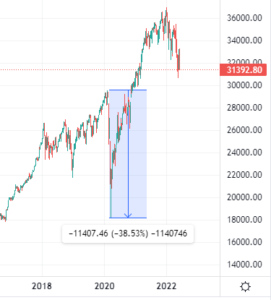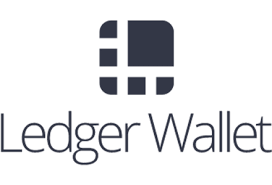The post How to Beat Inflation With Stablecoins by Reid McCrabb appeared first on Benzinga. Visit Benzinga to get more great content like this.
Record inflation has left Americans worried. Market turmoil, elevated gas prices and spiking prices at the grocery store have left consumers with less purchasing power. Typical inflation hedges such as gold have disappointed among the panic. The way to beat inflation could potentially be in a new technology known as stablecoins.
Contents
What are Stablecoins?
Stablecoins are cryptocurrencies pegged to a nation’s fiat currency or other stable assets. In most cases, stablecoins are pegged to the U.S. dollar. A couple of big players dominate in the U.S. dollar stablecoin sector. Some of the top names are Tether, USD Coin, Binance USD and DAI.
Stablecoins use different methods to keep their peg to the dollar, typically using an algorithm, holding collateralized assets or both. Good stablecoins back their token dollar for dollar with hard assets. Strictly relying on an algorithm has been proven unsuccessful. Most recently, the failure of algorithmic stablecoins was displayed by Terra (Luna), a stablecoin that recently collapsed.
Inflation: Prices on the Rise
Fiat money is naturally in a state of inflation. Whether constant inflation is a healthy economic model or not has been widely debated. What is certainly not a good model is extraordinary high inflation. High inflation raises prices for consumers and diminishes citizens’ spending power.
The U.S. inflation rate touched 8.5% in 2022 year over year, a far throw from the Federal Reserve’s goal of 2% inflation per year. A number of factors are spiking inflation, including COVID-19 stimulus checks, quantitative easing and low interest rates.
With inflation at the top of the Fed’s docket, a tightening cycle has begun. This process includes gradual rate increases and reduced quantitative easing. However, there is no guarantee that these measures will be enough to halt record inflation.
Hedges against inflation have proven disappointing; both gold and Bitcoin have gotten crushed in 2022. This circumstance could be a result of a rush to liquidity in the market as investors price in the tightening cycle. It proves that hedging inflation is a complex task.
Stablecoins are a promising new technology. While stablecoin interest is less profitable in an economy with 8.5% peak inflation, stablecoin staking can still help to negate inflation. Staking pools for stablecoins provide higher yield than holding dollars in the bank. However, these staking pools also present some risks.
How Can Stablecoins Negate Inflation?
window.LOAD_MODULE_PRODUCTS_TABLE = true;
MyConstant is a U.S.-based peer-to-peer lending platform that strives to match borrowers with investors. The service offers a variety of different investment products with interest rates up to 15% APY. This option allows investors to generate returns that potentially exceed the most competitive interest rates offered by financial institutions around the country.
An international group of developers launched MyConstant in January 2019 with the purpose of building a stablecoin. However, soon after creating its stablecoin, CONST, the team quickly pivoted to offering crypto-backed P2P loans, an area they believed was ripe for innovation.
Since then, MyConstant has been featured as a recommended money app in many finance news and tech apps and publications, including Forbes, Entrepreneur, Inc Magazine and Zero Hedge.
- Novice investors who need quick access to their money
- Experienced investors who can commit to a fixed term for a higher rate
- Crypto holders wanting new coins or cash without selling their existing assets
- Long-term cryptocurrency investors that want to earn passive income on idle assets
- 2-Factor authentication
- Much higher APY than traditional savings option
- Anytime withdrawals
- No fees for depositing and withdrawing funds
- Cryptocurrencies are inherently volatile
- Complex investment options with over five different lending plans that can confuse novices
- Limited currency offering
Holding stablecoins will not beat inflation – they are pegged to fiat currency, which is inflating. To beat inflation, you need to stake your tokens, in turn earning yield. Many variables come with staking crypto, including APY, risk, size of pool, asset being staked and staking platform.
The number of variables can be confusing, but stablecoins help simplify the process. By keeping their peg to a dollar, you will not have to worry about volatile price movements. Staking tokens that are not pegged to a dollar could offer higher yields; however, the price of the token could be worth nothing by the time your money is pulled out.
If you are looking to get into stablecoins, you can choose from a wide variety of options. If you’re looking to earn interest on a variety of stablecoins, MyConstant offers interest rates around 12% annually, which beats out the competition. Explained below are some of the top U.S. dollar stablecoins by market capitalization.
Tether (USDT)
The most commonly used stablecoin is USDT, which is backed by the company Tether. The stablecoin uses a mixture of assets including cash and Treasury bills to collateralize its stablecoin. Tether claims to back its stablecoin dollar for dollar – meaning even if there was a liquidity rush, everyone could be cashed out. However, Tether has not been open with its finances, and speculation has led many to believe they do not actually have what they claim. Tether offers high staking yields – around 12% – but this rate varies depending on the protocol.
USD Coin (USDC)
Second in market capitalization is USD Coin. The stablecoin is backed by two large companies, Coinbase Global Inc. (NASDAQ: COIN) and Circle. Together the companies form the Centre Consortium, which is open to new members. The main perks of USD Coin is its openness with their finances. While Tether has been tied up in speculation, USD Coin has proven its backing and received U.S. regulation. USD Coin has been closing the gap on Tether’s lead over the past few years. Staking USD Coin is similar to staking Tether, with similar APY offers.
Binance USD (BUSD)
Binance USD is the stablecoin created by the largest cryptocurrency exchange in the world – Binance. The company is based in China and is not legal for trading in the United States. This limitation did not stop it from launching its own stable coin, however. Binance USD has a similar staking yield around 12% annually.
DAI
The most decentralized of the stablecoins on this list is DAI. It is governed by a decentralized autonomous organization (DAO) called the MakerDAO. MakerDAO uses on-chain collateralization in the form of crypto assets to back the DAI stablecoin. DAI has remained incredibly stable and earns similar interest to the stablecoins listed here.
Best Platforms to Earn Interest on Stablecoins
window.LOAD_MODULE_PRODUCTS_TABLE = true;
Gemini is a cryptocurrency exchange and custodian that offers investors access to over 100 coins and tokens. Founded in the US, Gemini is expanding globally, in particular into Europe and Asia. Offerings include both major cryptocurrency projects like Bitcoin and Ethereum, and smaller altcoins like Orchid and 0x.
Gemini is 1 of the only brokers with multiple platform options based on skill level. New investors will love the streamlined interface of Gemini’s mobile and web apps, while advanced investors might appreciate all the tools that come with ActiveTrader.
In addition to a host of platform choices, Gemini users also have access to insured hot wallets to store tokens without worrying about digital asset theft. Learn more about what Gemini can do for you in our review.
- New investors looking for a simple mobile and web app
- Day traders looking to use technical analysis tools
- Users looking for a 1-stop-shop to buy, sell and store all of their cryptos
- Easy and quick signups — can get started in as little as a 5 minutes
- Multitude of platforms to accommodate traders of all skill levels
- Hot wallets include insurance to protect your from theft and hacking attempts
- Charges both a commission and a convenience fee for users buying and selling through the desktop or mobile app
You can pick from a number of platforms to stake your stablecoins on and earn yield. Some platforms you could try are MyConstant and Gemini. If you are looking for a decentralized application then Aave is a great choice.
Pros and Cons of Earning Interest With Stablecoins
Staking your stablecoins and earning yield can be rewarding; however, it is not without its own set of risks.
Pros
- With price pegged to dollar, there is less fluctuation in the value of your yield.
- Some pools offer high APY.
- Staking lets your money work for you at predetermined annual rates.
Cons
- Stablecoins have collapsed in the past, presenting more risk than USD.
- Less yield is earned staking stablecoins than if you were to stake a more volatile crypto.
- Scams are rampant –– researching where you stake is important.
Is Earning Interest on USDT, USDC, BUSD and DAI Worth it?
Earning interest on stablecoins could be a great investment, but it comes with risks. While the annual returns can be higher than the S&P 500s average, you risk collapse. When holders rush to sell, stability is tested. If you are going to stake stablecoins, prioritize choosing one that you believe is backing its currency 1:1 with USD.
The post How to Beat Inflation With Stablecoins by Reid McCrabb appeared first on Benzinga. Visit Benzinga to get more great content like this.
- '
- "
- 0x
- 100
- 2019
- 2022
- 9
- a
- About
- access
- accommodate
- addition
- advanced
- against
- algorithm
- algorithmic
- All
- allows
- Altcoins
- Americans
- among
- analysis
- annual
- Annually
- app
- Application
- apps
- AREA
- around
- asia
- asset
- Assets
- autonomous
- average
- backed
- Bank
- being
- below
- Bills
- binance
- Bitcoin
- Block
- border
- brokers
- Building
- BUSD
- buy
- Buying
- Can Get
- capitalization
- cases
- Cash
- Checks
- China
- choice
- choices
- Choose
- Circle
- claim
- claims
- closing
- Coin
- Coins
- come
- commission
- commit
- Companies
- company
- competition
- competitive
- complex
- Cons
- Consumers
- content
- convenience
- could
- country
- Couple
- COVID-19
- covid-19 stimulus
- created
- Creating
- crypto
- cryptocurrency
- Cryptocurrency Exchange
- Currency
- custodian
- DAI
- DAO
- decentralized
- Depending
- desktop
- details
- developers
- DID
- different
- digital
- Digital Asset
- Dollar
- dollars
- earn
- Earning
- easing
- Economic
- economy
- Entrepreneur
- ethereum
- Europe
- Event
- everyone
- exceed
- exchange
- existing
- expanding
- extraordinary
- factors
- Failure
- featured
- Federal
- Fees
- Fiat
- Fiat currency
- finance
- Finances
- financial
- Financial institutions
- First
- fixed
- fluctuation
- For Consumers
- Forbes
- form
- Founded
- from
- gap
- GAS
- Gemini
- generate
- Global
- Globally
- goal
- going
- Gold
- good
- great
- Group
- guarantee
- hacking
- hedging
- help
- here
- High
- higher
- holders
- holding
- How
- How To
- However
- HTTPS
- image
- important
- include
- includes
- Including
- Income
- incredibly
- inflation
- Innovation
- institutions
- insurance
- interest
- Interest Rates
- Interface
- International
- investment
- Investors
- IT
- January
- Keep
- keeping
- known
- large
- largest
- launched
- launching
- lead
- LEARN
- Led
- Legal
- lending
- Level
- LG
- limitation
- LINK
- Liquidity
- List
- Listed
- little
- Loans
- looking
- love
- major
- MakerDao
- Market
- Market Capitalization
- Match
- meaning
- measures
- medium
- Members
- methods
- might
- Mobile
- model
- money
- more
- most
- multiple
- names
- Nasdaq
- Navigation
- news
- number
- offer
- offered
- offering
- Offerings
- Offers
- On-Chain
- open
- Option
- Options
- organization
- Other
- own
- p2p
- Panic
- particular
- partner
- passive
- peer to peer
- perks
- plans
- platform
- Platforms
- players
- pool
- Pools
- power
- present
- price
- process
- Product
- Products
- profitable
- projects
- promising
- PROS
- protect
- protocol
- proves
- provide
- purchasing
- purpose
- quantitative
- Quantitative Easing
- Quick
- quickly
- raises
- Rates
- rating
- RE
- received
- recently
- record
- Reduced
- Regulation
- remained
- returns
- review
- Risk
- risks
- round
- rush
- sector
- sell
- Selling
- service
- set
- similar
- Simple
- Size
- some
- speculation
- Spending
- Sponsored
- Stability
- stablecoin
- Stablecoins
- stake
- Staking
- started
- State
- States
- Still
- stimulus
- stimulus checks
- store
- streamlined
- team
- tech
- Technical
- Technical Analysis
- Technology
- Terra
- Tether
- The
- the world
- theft
- Through
- Tied
- time
- together
- token
- Tokens
- tools
- top
- Traders
- Trading
- traditional
- transition
- typically
- u.s.
- United
- United States
- us
- USD
- USD Coin
- USDC
- USDT
- use
- users
- value
- variety
- W3
- Wallets
- web
- What
- What is
- whether
- while
- WHO
- without
- Work
- world
- worried
- worth
- year
- years
- Yield
- Your
- zero













